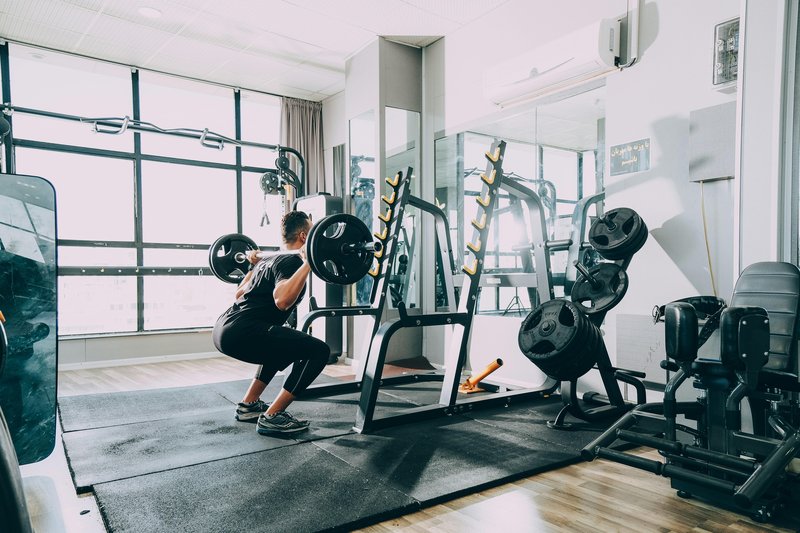Unleash Raw Masculine Power Through Boxing and Testosterone 🥊🔥
Boxing isn’t just about uppercuts and jabs—it’s a raw, primal sport that unleashes a surge of testosterone and male energy like few other physical disciplines. Whether you’re hitting the heavy bag or sparring in the ring, boxing activates your body’s hormonal response, boosts stamina, and enhances your confidence in and out of the bedroom. Let’s explore why boxing is one of the best testosterone-boosting workouts any man can do.
Why Boxing Triggers Testosterone Production
Boxing combines explosive anaerobic activity with high-intensity intervals—two training styles proven to stimulate testosterone. A typical boxing session involves short bursts of intense movement, such as punching combinations, footwork drills, and defensive maneuvers. These trigger your sympathetic nervous system and tell your body: “It’s time to fight.” That natural fight-or-flight response prompts your endocrine system to produce more testosterone to prepare for physical stress.
Key Hormonal Benefits of Boxing
- Increased Free Testosterone: Boxing boosts not just total testosterone, but the free testosterone that’s bioavailable and ready for action.
- Reduced Cortisol: Boxing helps regulate cortisol levels, especially when combined with proper cooldowns and recovery.
- Improved Growth Hormone Secretion: Explosive movements used in boxing also enhance GH production, complementing testosterone for recovery and lean muscle growth.
Boxing vs. Traditional Cardio
Traditional endurance cardio—like jogging for an hour—can sometimes suppress testosterone if overdone. Boxing, on the other hand, offers high-intensity intervals that shock the system into building muscle, burning fat, and maintaining hormonal balance. It’s functional, primal, and hormonally smart.
Boxing and Sexual Confidence
The benefits of boxing go beyond the gym. Men who box regularly report increased libido, better erection quality, and a stronger sense of masculinity. The combination of cardiovascular fitness, hormonal enhancement, and physical assertiveness leads to more dominant body language, higher self-esteem, and increased bedroom performance. Related: Blood Flow and Erectile Strength.
The Science: What Studies Say About Boxing and Testosterone
Research confirms that short, high-intensity activities like boxing cause acute spikes in testosterone. A 2012 study from the Journal of Strength and Conditioning Research showed that men who engaged in high-intensity training saw a significant increase in serum testosterone post-exercise. Boxing mimics the same exertion pattern used in these studies—explosive, fast-paced, with minimal rest.
Another reason boxing is so effective? The full-body activation. Punching requires coordination between legs, core, shoulders, and arms. This full-muscle engagement recruits more motor units, which stimulates more hormonal response compared to isolated weight training alone.
Boxing and Mental Dominance
Boxing doesn’t just build testosterone—it builds grit. The confidence gained from sparring and self-defense drills feeds into hormonal health. Stress and anxiety are testosterone killers. Boxing acts as a pressure valve, releasing tension through action. As cortisol drops, testosterone rises in balance.
Many men also experience reduced symptoms of depression and anxiety after training. The discipline, structure, and focus required in boxing offer a psychological edge. You feel more assertive in daily life, which translates into better social and sexual performance.
Boxing vs. Weightlifting: Which Builds More Testosterone?
While heavy compound lifts like deadlifts and squats are great for testosterone, they lack the cardiovascular explosiveness of boxing. Boxing builds both anaerobic power and speed, while challenging coordination and rhythm. If you’re already lifting, boxing is the perfect complementary tool to sharpen your athleticism and maximize hormonal output.
How to Structure a Testosterone-Focused Boxing Routine
You don’t need to fight in a ring to reap the hormonal benefits. A simple weekly plan might include:
- 2-3 Heavy Bag Sessions: 3-minute rounds, 6-10 rounds total, with 30 seconds rest between rounds.
- 1 Shadowboxing Drill Day: Focus on speed, combinations, and movement.
- 1 Sparring or Mitt Work Day: Practice reactions, timing, and mental focus.
- Cooldowns: Always stretch and do deep breathing post-workout to support hormonal recovery.
Combine your boxing with recovery-focused practices like ice baths or cold showers. (Related: Hydrotherapy and Testosterone)
Nutrition Tips to Support Testosterone for Fighters
If you’re boxing hard but eating poorly, you’re leaving testosterone on the table. Nutrition plays a pivotal role in how well your body produces and utilizes hormones like testosterone. Focus on these essentials:
- Protein: Lean beef, eggs, chicken, and Greek yogurt repair muscle and support testosterone synthesis.
- Fats: Testosterone is made from cholesterol. Healthy sources like olive oil, egg yolks, and nuts are vital.
- Zinc and Magnesium: Found in shellfish, seeds, and spinach, these minerals are directly involved in testosterone production and sleep quality.
- Vitamin D: Get sunlight daily or take a high-quality supplement to optimize levels.
Common Mistakes That Kill Testosterone in Boxing
Even committed fighters can make lifestyle choices that sabotage hormonal health. Watch out for:
- Overtraining: Too much intensity with too little recovery equals cortisol dominance and testosterone suppression.
- Low-fat diets: Going too lean can crash hormone production. Fats are essential, not optional.
- Poor sleep: Testosterone is primarily produced during deep sleep. If you’re not getting 7–9 hours, you’re short-circuiting your gains.
- Stress overload: Mental burnout and constant pressure lower testosterone. Use boxing as a tool to manage life stress—not add to it.
Boxing + Resistance Bands = Peak Stamina
For men looking to take their testosterone and stamina even further, combining boxing with resistance band training can unlock new levels of performance. Bands enhance explosive power, protect joints, and keep the muscles under tension longer—all while maintaining flexibility. This synergy makes your body harder, stronger, and more hormonally efficient.
Mini FAQ: Boxing and Hormones
How often should I box to raise testosterone?
2–4 times per week is ideal. Too much can lead to burnout, too little may not create a stimulus. Pair with strength training and recovery for best results.
Does boxing help with bedroom performance?
Yes. Boxing boosts blood flow, reduces body fat, and elevates testosterone—all of which support erection quality and libido.
What if I’m new to boxing?
You don’t need to spar or get hit. Start with heavy bag drills, footwork, and shadowboxing. Focus on intensity and movement to tap into the hormonal benefits.
Real-Life Fighters Who Embody Peak Testosterone
Look at elite boxers like Mike Tyson in his prime or current champions like Gervonta Davis—these athletes aren’t just skilled, they radiate male energy and confidence. That’s the testosterone difference. Their discipline, aggression control, and physical dominance come from a well-trained body and a powerful hormonal foundation.
Even amateur fighters often notice changes after just a few weeks of consistent boxing: more energy in the morning, better sleep, increased libido, and sharper focus. These are all hallmarks of rising testosterone. You don’t need to go pro—just show up and throw punches with intent.
Surprising Testosterone Facts for Boxers
- Testosterone increases post-training but drops during overtraining—so rest is just as important as the workout.
- Men with higher testosterone are more likely to take physical and social risks, which boosts confidence.
- Boxing improves posture and body language—both of which feed back into self-image and hormonal responses.
The Final Round
Boxing is more than a workout. It’s a biological switch that flips you into high-performance mode—mentally, physically, and sexually. By combining this powerful discipline with smart recovery, nutrition, and consistency, your testosterone levels can soar.
And if you’re looking to take your sexual stamina, erection quality, and confidence even further, start your full transformation here. The tools and natural protocols you’ll find are already changing thousands of men’s lives. Be next.
For more insights into boosting stamina, don’t miss our deep dive on testosterone for endurance athletes.
Advanced Strategies for Boxers Over 30
As men age, natural testosterone production begins to decline—especially after age 30. But that doesn’t mean your fighting edge has to fade. In fact, boxing can be a powerful tool to preserve masculinity, performance, and sexual drive into your 40s and beyond.
Here’s how to box smarter as you age:
- Focus on Recovery: Add one extra rest day per week and prioritize sleep (7.5+ hours).
- Reduce Volume, Not Intensity: Maintain explosive power but lower total session length (30–40 min max).
- Integrate Mobility Work: Prevent injury and keep joints fluid with daily dynamic stretching and warmups.
- Use HRV Tracking: Tools like Whoop or Oura can help track recovery and prevent hormonal dips.
Remember, testosterone is your biological armor. Keeping it high helps with fat-burning, muscle preservation, and libido—all critical for aging fighters who still want to perform like they’re in their 20s.
Age vs. Testosterone: What You Didn’t Know
- Men can lose up to 1% of testosterone per year after 30—but active lifestyles can reduce this significantly.
- Sexual frequency also influences hormone levels. More sex = more testosterone, and vice versa.
- Boxing 2–3x a week has been linked to better T levels than sedentary lifestyles, even when adjusted for age.
🥊 Boxing vs. Other Training Methods for Testosterone
| Method | Testosterone Spike | Stamina Benefit | Sexual Confidence |
|---|---|---|---|
| Jogging | Low | Moderate | Low |
| Weightlifting | High | Low | Moderate |
| Boxing | High | High | Very High |
Step Into the Ring of Your Life
Your hormones are your internal fire. Boxing helps you stoke that fire into a controlled, explosive force. If you’re tired of feeling sluggish, soft, or sexually disconnected—step into the ring. Let boxing awaken your edge. And when you’re ready to take the next leap in stamina, size, and confidence, visit supremepenis.com and discover what’s truly possible for your body and masculinity.
📌 FAQs About Boxing and Testosterone
Does boxing help with testosterone in older men?
Yes. Boxing stimulates growth hormone and T even in men over 40. The explosive nature of boxing triggers hormonal resilience.
How soon can I see testosterone benefits from boxing?
Many men report increased libido and energy within 2–3 weeks of consistent boxing sessions, especially when paired with good sleep and recovery.








